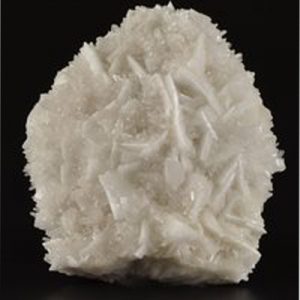Valencianite
Valencianite was named in 1830 by Johann Friedrich August Breithaupt (1791-1873), a German mineralogist, for the first occurance at the Valenciana Mine, Guanajuato, Mun. de Guanajuato, Guanajuato, Mexico. The Valenciana Mine is a silver and gold mine reaching a depth of about 1,800 feet. The mine began operation in 1774 and has accounted for two-thirds of the world’s silver production.
Waldemar Lindgren was the first writer to emphasize the occurance of Orthoclase as a vein mineral in 1898. The nameValencianite was revived by Lindgren, who suggested Valencianite is a better name to use for vein Orthoclase than Adularia because vein Orthoclase is not usually clear and glassy like typical Adularia. Valencianite specimens consist of sharp, pearlescent, snow-white Valencianite blades accented with small Quartz and Calcite crystals. The crystals are subtransparent and up to 2 cm in length, showing stout prismatic habit.
Valencianite distribution: at the type locality at Valenciana Mine, Guanajuato, Mun. de Guanajuato, Guanajuato, Mexico. At the Seikoshi mine, Shizuoka Prefecture, Japan. At at Rhonegletscher, Switzerland. In the US at Silver City, Idaho and Cripple Creek, Colorado. Vein Orthoclase has also been recorded from several localities in Germany, Austria, Norway, New Zealand and Mexico.
| Formula: | KAlSi3O8 |


